This article has been written by Akanksha Singh. This article is a comprehensive piece of work on the case analysis on Shanti Bhushan vs. the Supreme Court of India through its Registrar and Another (2018), famously known as ‘Master of Roster Case’. This article provides a detailed study of this landmark case. It also deals with essential principles, along with relevant case laws and precedents involved in this case. This article gives a comprehensive learning experience to the learners.
This article has been published by Shashwat Kaushik.
Table of Contents
Introduction
The case of ‘Shanti Bhushan vs. Supreme Court of India through its Registrar and Another (2018)’ is a pivotal stage in the evolution of the laws concerning the powers and functions of the Chief Justice and other judges in the court of law. Under the Constitution of India, Article 14 imbibes the principle of equality. It says that “all are equal in the eyes of law”. The independence of the judiciary is one of the most significant features of the separation of powers in India. This feature of the judiciary acted as a guiding principle in this case in order to come to the judgement. This landmark judgement is an example of the wide complexities evolving with respect to constitutional law. The petitioner, who is a renowned figure in the legal fraternity and is a former Union Minister of Law & Justice, found it necessary to bring forth the issue of the independent powers of the Chief Justice of India in order to analyse the transparency and accountability of the judicial system in the administrative functioning of the court.
This case highlighted a growing concern regarding the exclusive administrative powers of the Chief Justice of India with regard to the constitution of benches and the allotment of matters to the benches constituted. The petitioner expressed concern that this unrestricted power of the Chief Justice of India should be checked and a balance should be drawn with regards to his exclusive power and the power of the collegium. The core claim of the arguments presented by the petitioner was that the power of the Chief Justice to allot matters to different benches was a function that should be carried out in conformity with established norms and constitutional principles rather than an unassailable or personal right. He contended that such exclusive powers and a lack of openness might encourage an atmosphere of arbitrariness. Hence, a framework ensuring more accountability and transparency was required. In his appeal, the petitioner asked the Supreme Court to acknowledge the idea that the Chief Justice was just the “first among equals,” suggesting that the administrative authority of the Chief Justice of India was subject to the same restrictions and examination as that of other judges.
This judgement raised concerns regarding balancing the independence of the judiciary and ensuring transparency and accountability in the judicial system. The Chief Justice of India has a crucial role in the everyday functioning of the court, as the Supreme Court noted in its ruling, but it also emphasised the need for a more open and cooperative process for allocating cases. Despite being regarded as the “Master of the Roster,” the Chief Justice of India must utilise this authority in a just, equitable, and open manner, as the ruling said. The Court acknowledged that the authority to assign cases was inextricably related to the judiciary’s need to provide fair and prompt justice, and that any departure from this obligation might have a significant impact on the public’s confidence in the legal system of the country.
Details of the case
- Name of the Case: Shanti Bhushan vs. Supreme Court of India through its Registrar (2018)
- Case Number: 789 of 2018
- Equivalent Citations: 8 SCC 396
- Court: Supreme Court of India
- Bench: Hon’bleJustice A.K. Sikri and Hon’ble Justice Ashok Bhushan
- Author of the judgement: Justice Ashok Bhushan
- Petitioner/Appellant: Shanti Bhushan
- Petitioner represented by: Advocate Dushyant Dave
- Respondent: Supreme Court of India Through its Registrar and Another
- Respondent represented by: Attorney General K.K. Venugopal
- Subject-Matter of case: Administrative Powers of the Chief Justice of India
- Date of the Judgement: July 06, 2018
Facts of the case
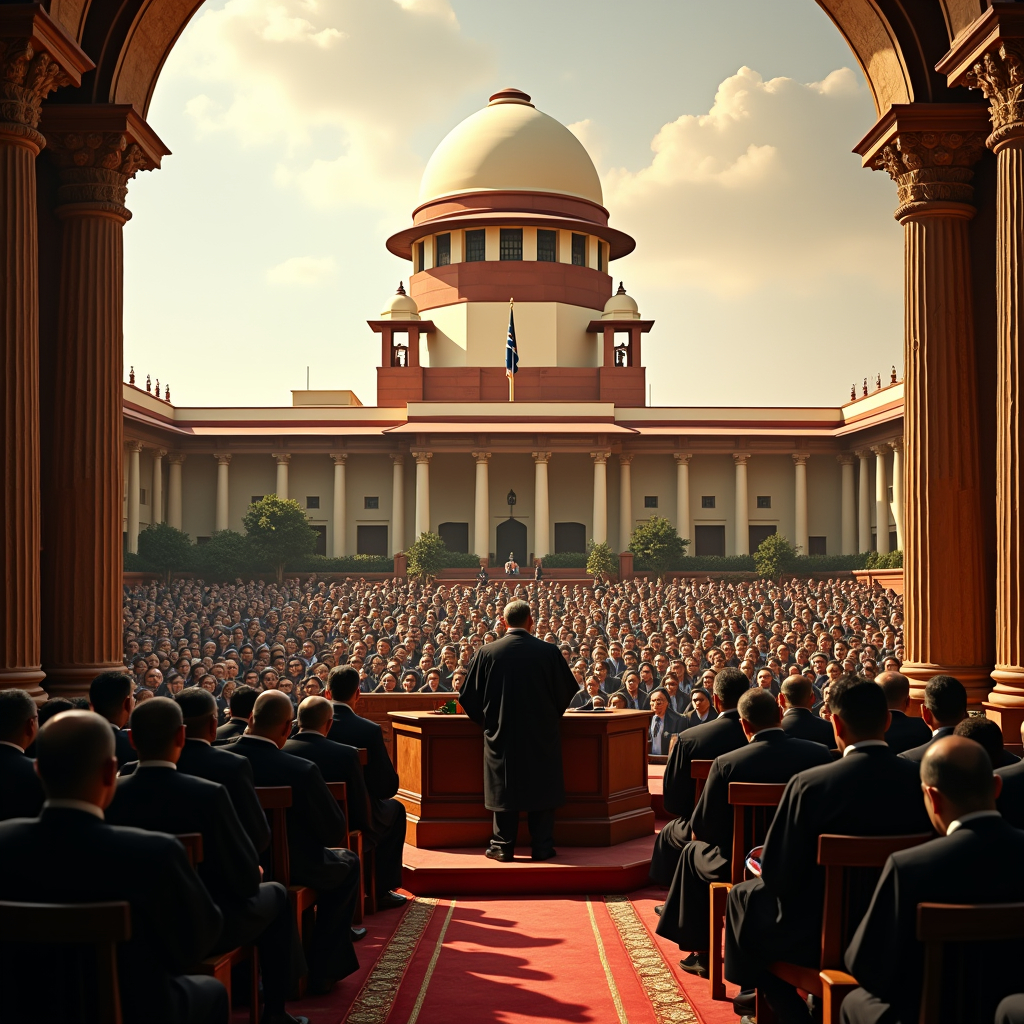
The case of ‘Shanti Bhushan vs. The Supreme Court of India through its Registrar and Another’, was filed by a senior advocate of the Supreme Court of India. This aforementioned petitioner has enjoyed a good and credible reputation in the public in general and in the professional journey of law as well. The petitioner had filed this case under Article 32 of the Constitution of India. This petition was filed by the petitioner in order to seek clarification on the administrative power of the Chief Justice of India. This clarification about the administrative power of the Chief Justice of India was with regards to the status of the ‘Master of Roster’ and the procedure and principles that are to be followed in the preparation of the ‘Roster for Allocation of cases’. Thus, this matter came before the Supreme Court of India.
However, the petitioner recognised and accepted the legal principles, which say that the “Chief Justice of India is the Master of Roster”. This principle further says that the “Chief Justice of India has the authority to allocate the cases to different judges or benches of the Supreme Court of India”. The petitioner also acknowledged and accepted the reasoning behind this aforementioned principle. The reasoning is based on the understanding that such a principle exists only to maintain judicial decorum and discipline. The petition also mentioned the provision regarding the status of the Chief Justice of India, as “first among the equals.” This expression means that the Chief Justice of India is the senior-most judge, while all the judges of the Supreme Court of India are equal in status and possess the same judicial authority and power. However, this expression does not imply that the Chief Justice of India is in any way superior in authority in comparison to the other judges of the court. The powers of the Chief Justice of India are necessitated to be exercised in a manner that is transparent, just, and fair.
Issues raised
The Supreme Court of India framed the following issues in this case:
- Whether the Chief Justice of India, as the Master of Roster, has the sole authority to allot matters to different benches or different judges of the Supreme Court?
- Whether the expression ‘Chief Justice of India’ is interpreted to mean a collegium of five senior judges of the Supreme Court of India?
Arguments of the parties
Petitioner
The petitioner mentioned in his petition that the Chief Justice of India is the one who is responsible for deciding the bench that will hear a particular case. This provision was mentioned as per the status of the Chief Justice of India as the ‘Master of Roster’. However, the petitioner was concerned with the apprehension with regard to the allotment of a particular case to a specific bench or judge by the Chief Justice of India in order to get the desired judgement. Further, the petitioner sought clarification from the Supreme Court of India regarding the listing of matters that were urgent. Thus, the petitioner called for a system wherein a better rationale and transparency are to be adopted for the listing and re-allocation of the matters. This was done to avoid any possibility of inequality and bias. The petitioner also suggested that the cases should be listed as per the provisions of the Supreme Court Rules, 2013. These rules were to be applied strictly in the listing and re-allocation procedures of cases by the Chief Justice of India. The petition mentioned that it was well-known that, as per the Supreme Court Rules, 2013, the Chief Justice of India is empowered to exercise a certain level of discretionary power in allocating some of the cases to any of the benches or judges. Thus, the petitioner further mentioned that, with this regard that such a power is exercised in a fair and reasonable manner, the term “Chief Justice” should be considered to mean “collegium”. “Collegium” should consist of the first five judges of the Supreme Court, as held in the famous case of Supreme Court Advocates-on-Record Association and Others vs. Union of India (1993), popularly known as the “Second Judges Case”. The learned senior counsel appearing for the petitioner, Mr. Dushyant Dave, submitted his arguments before the Supreme Court of India. The petitioner in this regard gave a clarification in his petition that the scope of the present petition is limited to the assessment of the powers of the Chief Justice of India with regard to the procedure related to the listing of matters, and the sole purpose behind such a petition was to ensure a standard process that this power of the Chief Justice of India was exercised lawfully in a just manner. In this regard, the petitioner gave the following arguments:
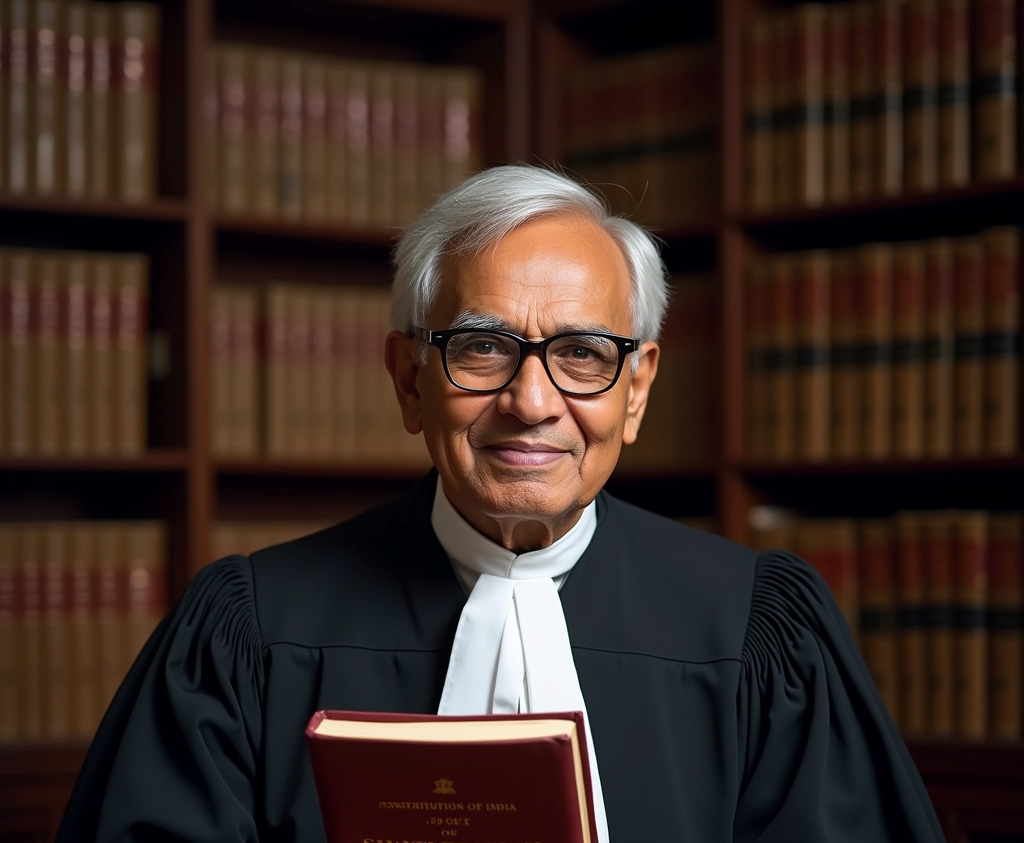
- The petitioner argued by referring to Article 145 of the Constitution of India. The petitioner mentioned that, as per Article 145 of the Constitution of India, the Supreme Court of India has been empowered to make rules for general regulation of the practices and procedures of the court. However, the rules also provide for the approval of the president while making any rules regarding the practice and procedure of the court.
- The petitioner further mentioned that the aforementioned rules regarding the practice and procedure of the court can also include provisions related to the manner in which appeals and other matters relevant to the proceedings of the court are heard, including the time of the hearing of the appeal or other matters.
- The petitioner also mentioned that Article 145 of the Constitution of India provides for a minimum number of judges required to sit for making any decision with regards to deciding any case concerning a substantial question of law with regards to the interpretation of the Constitutional provisions or any reference made under Article 143 of the Constitution of India.
- The petitioner further argued by giving a detailed reference to Article 124 of the Constitution of India. Article 124 of the Constitution of India mentions the establishment and constitution of the Supreme Court of the country. It states that there shall be a Supreme Court of India. The Supreme Court of India shall consist of the Chief Justice and a maximum of seven other judges of the Supreme Court, unless the Parliament prescribes a larger number by law.
- According to the aforementioned explanation of Article 124 of the Constitution of India, the term ‘Supreme Court’ thus includes the Chief Justice of India along with other judges of the court. Thus, by a reading of both Articles 124 and 145 of the Constitution of India, confers power to the entire Supreme Court. This power also includes the power to make the roster and give directions for the listing and hearing of matters before the court.
- Here, the petitioner drew a very significant inference and states that although the principle of “Chief Justice is the Master of the Roster” is given under the convention, the conventional scheme under the Constitution has been originally meant to confirm powers upon the Supreme Court of the country.
- Furthermore, the petitioner went on to refer to the case of S.P. Gupta vs. Union of India and Another (1981), popularly known as the “First Judges’ Case”. This was the first case to state that the term “chief justice” shall be deemed to mean ‘collegium’. This judgement came as a response to the concerns regarding the unguarded and was reiterated in the case of “Second Judges’ Case” and “Third Judges’ Case”.
- Thus, as per the laws laid down in the aforementioned case, the crucial functions of the making of roster, listing, and allocation of the sensitive cases of the court cannot be left to the sole discretion of the Chief Justice of India. Any such sole discretion is considered to be under the constitutional provisions laid under Article 124 and Article 145 of the Constitution of India.
- Therefore, the petitioner strongly argued that the expression “Chief Justice” shall be deemed to mean the “Supreme Court” or the “collegium” of five senior-most judges of the Supreme Court, as held by various judgements, in order to maintain adequate “checks and balances” against any possible misuse of power.
- The petitioner also mentioned that under Article 145 of the Constitution of India, the power has been conferred on the Registrar to manage the preparation of the lists and fix the date of hearing of petitions. This is provided under Rule 7 and Rule 8 of the Supreme Court Rules, 2013. These provisions of the Rules shall be adhered to strictly. The matters shall be listed as per Order III, Rule 7 and Rule 8.
- Furthermore, the learned counsel for the petitioner submitted that the administrative power has to be exercised by the Chief Justice of India in a just and fair manner, while working as the ‘Master of Roster’. While performing the functions as the ‘Master of the Roster’, the Chief Justice of India acts purely in an administrative capacity.
- Furthermore, the petitioner also submitted that the ‘Test of Reasonable Apprehension’ shall be applied in determining the applicability of the principle of bias. This test says that the reasonable apprehension shall be a possibility in the mind of any party to a particular case. The essence of this principle is also found in the principle of natural justice. This was held in the case of ‘Ranjit Thakur vs. Union of India and Others (1987)’. This case emphasised on the fact that the Indian Judiciary is the body which is independent and performs the function of judicial review.
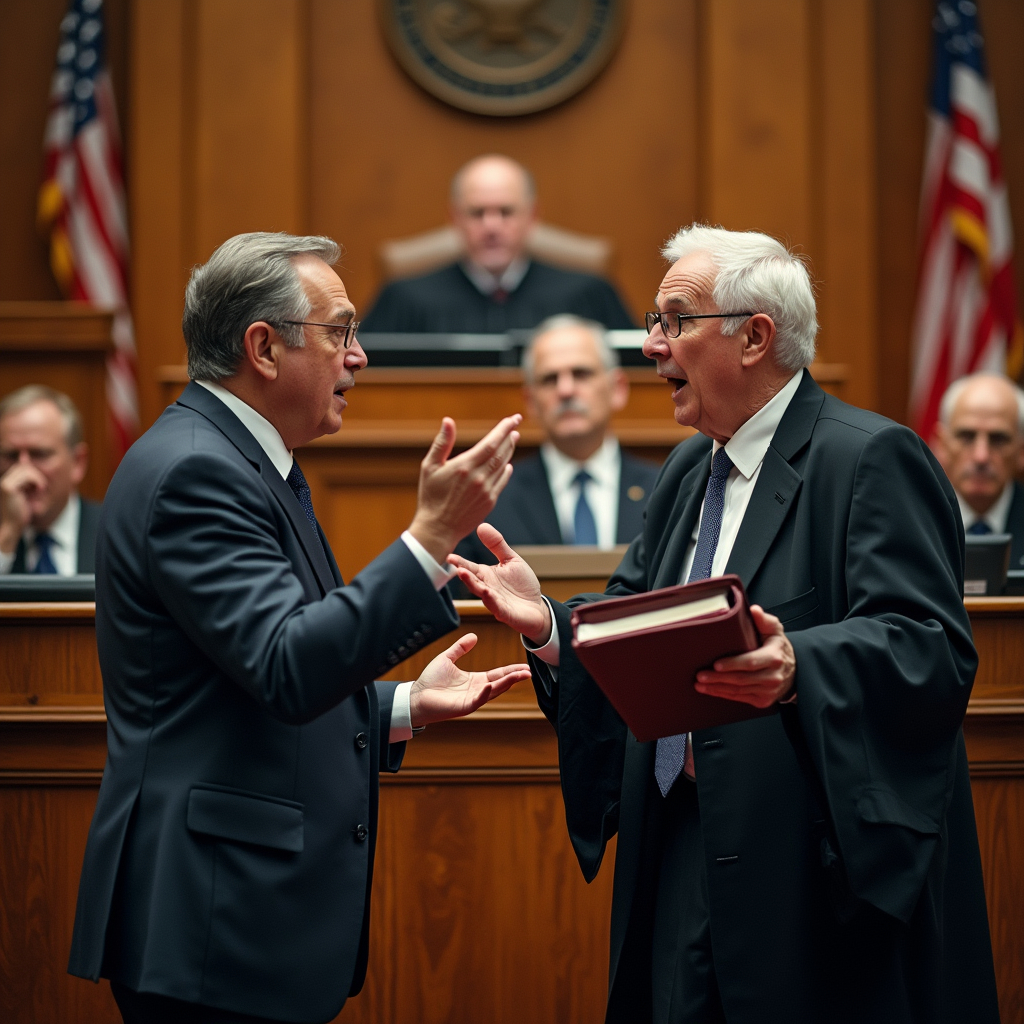
- Thus, it becomes very necessary to keep the powers of the judiciary in check, as per the constitutional provisions. The task of assigning the matter and its listing has to be conducted in a transparent and fair manner. This is essential to maintaining the trust and confidence of the public at large in the highest judicial body of the country. Thus, the power of listing and allotting cases to any bench or judge has not to be exercised by any one individual. This could be efficiently done by following the principles laid down in the Second Judges’ Case.
- The learned counsel for the petitioner further pointed out that in the legal system of India, which runs on the democratic principles, the aim was to share the administrative powers given to the Chief Justice of India with other senior-most judges of the Supreme Court of India. This is essential to ensure that the powers of the Chief Justice are exercised in a fair and just manner. The petitioner had also referred to the various judicial systems of different countries, to bring more clarity to his arguments. The petitioner referred to the judicial courts of various developed countries such as the High Court of Australia, the Supreme Court of the United Kingdom, the Supreme Court of Canada, the German Federal Court, the European Court of Justice and the European Court of Human Rights.
Respondent
In response to the arguments presented by the petitioner, the learned Attorney General, Mr. Venugopal, presenting the case from the side of the respondent, submitted that the petitioner has accepted the legal stance to the effect that the “Chief Justice is the Master of the Roster”. The respondent further argued that the petitioner also accepts the position that the Chief Justice has the authority to list and allocate cases to different benches or to different judges of the Supreme Court as per the capacity of the Chief Justice as the ‘Master of Roster’. Thus, the respondent said that the dispute is only restricted to the manner in which such autonomous power has to be used. At the same time, the respondent also mentioned that the petitioner has not questioned the various decisions given by the benches or judges. Further, the respondents pointed out that the petition has based his entire case on the manner in which the assignment of cases has to be done by the Chief Justice. The petitioner pressed on the fact that there should be a fair and just allotment of matters to the benches or judges of the Supreme Court by the Chief Justice. Furthermore, the respondent also submitted that the petitioner has suggested considering the term ‘Chief Justice’ as a ‘collegium’ of five senior-most judges. In response to these arguments, the learned Attorney General for the respondent, Mr. Venugopal, made the following arguments.
- The learned Attorney General submitted his argument and stated that although, the Third Judges case suggested such a mechanism, that is, the position of considering the term ‘Chief Justice’ to mean the ‘Collegium’ of five senior-most judges, for the appointment of judges in the High Court and the Supreme Court of India, the position is totally based on impractical grounds as far as the conduct of administrative responsibilities by the Chief Justice of India in the capacity of the “Master of Roster”. The learned Attorney General, Mr. Venugopal, strongly refuted the aforementioned suggestion presented by the petitioner. The learned Attorney General argued that the interpretation of the term ‘Chief Justice’ as the ‘collegium’ of five senior judges is completely impractical. He grounds his argument on the contention that such an interpretation would create a lot of chaos in the everyday functioning of the benches. It would hamper the efficiency of the everyday administrative work in case the decision regarding the listing and allotment of the cases to different benches or different judges were made by the ‘collegium’ of five senior-most judges.
- The learned Attorney General further contended that the decision related to the listing, allotment, and reallocation of cases to the different benches and different judges should be left to the sole discretion of the Chief Justice of the Supreme Court, acting in an individual capacity. He argues that such a provision would restore the faith of the people in the system of the court and would ensure the smooth functioning of the court by establishing the trust of the people in the highest constitutional position in the judiciary of India.

Law discussed in Shanti Bhushan vs. Supreme Court of India through its Registrar (2018)
The case discussed two important provisions under the Constitution of India. They are Article 124 and Article 145.
Article 124 of the Constitution of India
Article 124 of the Constitution of India is one of the most pivotal provisions with regard to the Supreme Court, as it determines rules for the establishment, composition, and functioning of the Supreme Court of India. Let us discuss the key provisions of the article.
- Establishment and composition of the Supreme Court of India
Clause (1) of Article 124 talks about the composition of the Supreme Court of India. It says that the Supreme Court of India shall exist of the Chief Justice of India along with numerous other judges as prescribed by the laws of the parliament. Historically, the Supreme Court of India consisted of the Chief Justice of India along with other seven judges. However, this number has increased. It is the president of India on whose approval the judges of the Supreme Court is appointed.
- Appointment of the Judges of the Supreme Court of India
Clause (2) of Article 124 delineates the process for the appointment of justices to the Supreme Court. The Chief Justice of India and other justices are appointed by the President. The seniority principle, which places the highest ranking Supreme Court judge in the post of Chief Justice of India, has historically guided the nomination of the Chief Justice of India. The President contacts the Chief Justice of India and other senior Supreme Court justices before appointing new judges; this procedure has developed into the collegium System. However, this system has not been mentioned in the Constitution but has been established by the courts through judicial precedents. This system consists of the Chief Justice of India and a collegium made up of the four most senior judges of the Supreme Court.
- Qualification required for the appointment of Judges of the Supreme Court
The requirements for an individual to be appointed as a judge of the Supreme Court are outlined in Clause (3) of Article 124. The qualification requires that one is an Indian citizen, either a prominent jurist in the view of the President, or a judge of a High Court (or of two or more such courts in succession) for at least five years, or an advocate of a High Court (or of two or more such courts in succession) for at least 10 years. These requirements guarantee that appointed judges have a great deal of legal knowledge or significant judicial experience.
- Removal of Judges of the Supreme Court of India
Judges of the Supreme Court are subject to tenure and removal under Articles 124(4) and (5). Judges remain in office until they are 65. They might tender their resignation by writing to the President under their hand. There is very limited ground for the removal of judges of the Supreme Court. A judge of the Supreme Court of India can only be removed on the proven incapacity or misbehaviour. This removal can only be done with a rigorous process consisting of approval from the parliament.
Article 145 of the Constitution of India
Article 145 of the Constitution of India is an essential provision concerning the administrative powers of the Chief Justice of India and the procedural framework of the Supreme Court of India. This Article provides the Indian judiciary the autonomy to function independently in carrying out certain administrative functions. There are certain elements in this Article which are discussed below in order to give a better understanding of the provision to the readers.
- The Rule-Making Power
The Supreme Court is empowered to frame rules and regulations with regard to the procedures and practices it will follow. These practices and procedures are related to the functioning of the Supreme Court.
- Approval of the President of India
Under this Article, the rules and regulations framed by the Supreme Court of India shall be subject to the approval of the President of India. This ensures a check and balance between the power of the judiciary to function independently and maintain transparency.
- Parliamentary Oversight
The rules and regulations made by the Supreme Court shall be in consonance with the laws made by the Parliament. This ensures that the judiciary functions within the legal framework established by the parliament.
- Administrative Efficiency
The rule-making power of the Supreme Court ensures that the judiciary functions as per the requirements of the present and that there is a smooth transaction in the court.
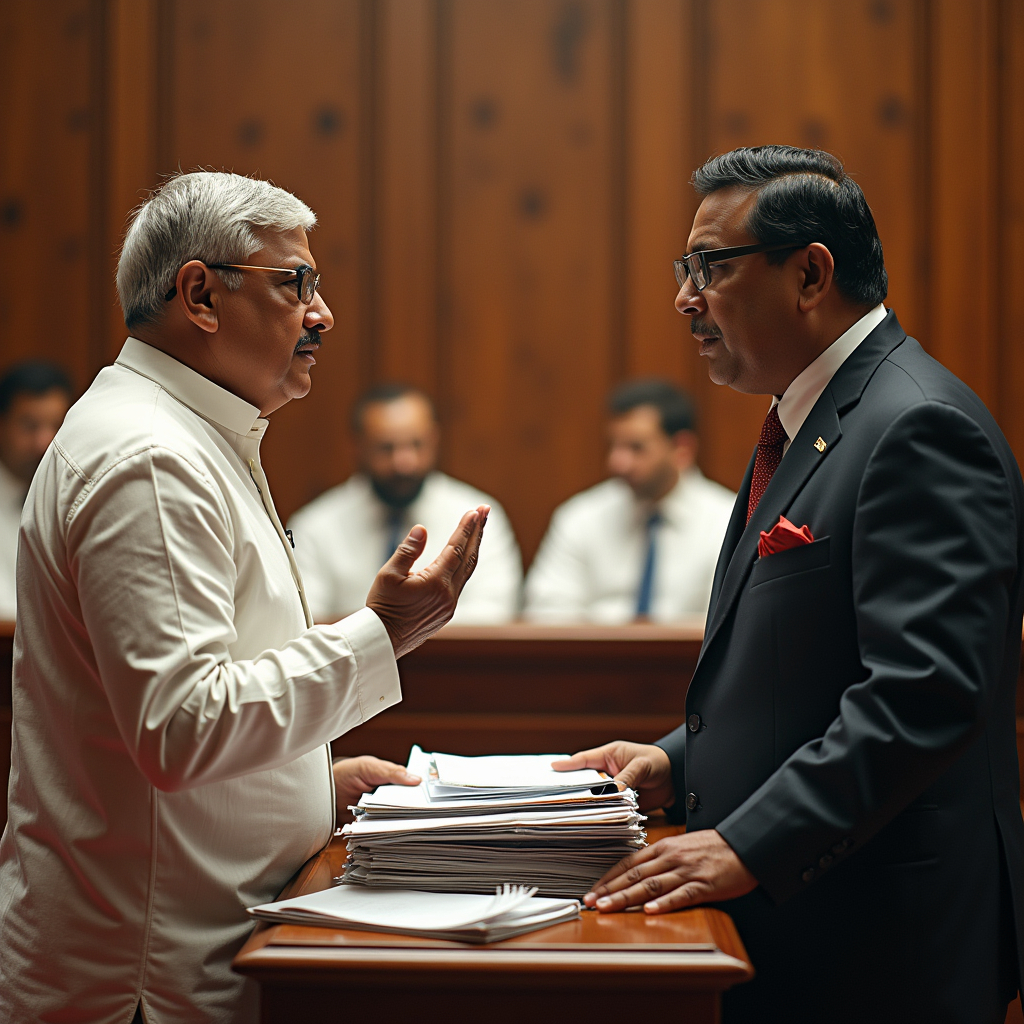
Judgement of the case
The Supreme Court of India made serious consideration of all the arguments presented by the petitioner and the respondent. The Supreme Court clarified at the outset that this case has not been considered adversarial in nature. Further, the Supreme Court clarified that the court did not question the bona fides of the petitioner, who indeed is a person enjoying a reputable position in the court as well as in the legal fraternity. Moreover, the Supreme Court clarified that this matter has been treated objectively and with a sense of great responsibility. However, the Supreme Court stated that it is the duty of the court to decide the matter as per all the relevant legal positions, considering the Constitution of India, statutes, and other applicable legal provisions involved in the precedents of this court having binding effect. The Supreme Court gave the judgement in a very clear and precise manner by discussing each of the issues raised in the case. Following is the detailed judgement of the Supreme Court in this case, given in an issue-wise manner.
Whether the Chief Justice of India, as the Master of Roster, has the sole authority to allot matters to different benches or different judges of the Supreme Court
The first and foremost observation made by the Supreme Court in this issue was that it was an undisputed fact that the Chief Justice is the Master of the Roster. There was also no dispute about the fact that the Chief Justice has the authority to allocate cases to different benches or different judges of the Supreme Court. Moreover, the petitioner himself admitted the fact that the principle that “Chief Justice is the Master of the Roster” was essential to maintaining the discipline of the Indian Judiciary and ensuring the proper functioning of the court. This same principle was said in the case of Asok Pande vs. Supreme Court of India through its Registrar and Ors. (2018).
Further, the Supreme Court then went on to hold that there is no doubt with respect to the administrative powers of the Chief Justice of the High Court. The court said that the same principle must apply to the powers of the Chief Justice of India. The court commented that when it comes to the judicial functions of the Chief Justice of India, he is first among the equals. However, when it comes to the roster, the Chief Justice has the sole authority to constitute benches and allot matters to them. The Court held that certainly the same principle that is applicable to the High Court is applicable to the Supreme Court. The court further clarified that neither a two judge bench nor a three judge bench can allocate the matters to any other bench or themselves and can order the constitution of benches. In other words, the court held that there cannot be any order or direction to the Chief Justice of India with regard to who shall be sitting on the bench or who shall be allotted a particular matter. The Chief Justice cannot be commanded or ordered to constitute a particular bench. Any such order is impermissible by law.
Whether the expression ‘Chief Justice of India’ is interpreted to mean a collegium of five senior judges of the Supreme Court of India
The Supreme Court noted the provisions of Article 145 of the Constitution, which gives the Supreme Court the authority to make rules for generally regulating the practice and procedure of the Court, including the matters specifically mentioned in Article 145 of the Constitution. These rules must be made with the approval of the president of India, even though the Court denied the relief sought by the petitioner. The Court also made reference to the Order VI of Supreme Court Rules 2013. This directive addresses the creation of separation of power of the judges and courts. According to Rule 1 of that document, the Chief Justice is responsible for nominating judges, who would make up a bench to consider a subject, case, or appeal.
Rule 1 thus provides that the Chief Justice has the power to constitute a division bench as well as a larger bench. In case, where a reference of a matter has been made by a bench larger to it. It is the Chief Justice who will constitute the bench to which such reference will be given. The rule nowhere mentioned that the judges of the larger bench will be the same as the judges of the previous bench.

The Supreme Court of India further noted that in the case of State of Rajasthan vs. Prakash Chand (1998) and Campaign for Judicial Accountability and Reforms vs. Union of India & Anr. (2018), it was held that such suggestions regarding the term Chief Justice of India is “Manifestly Misconceived”. The court held that it is a well settled principle that a mandamus cannot be issued in order to direct a body or an authority that is already vested with the rule-making power to make rules or to make the rules in a particular manner. Therefore, the petitioner is not entitled to seek any order in favour of a constitution from a particular bench in a particular manner. The court said that the relief sought by the petitioner is not in accordance with legal and constitutional principles. The petitioner has sought the establishment of a precedent that says that the Chief Justice must mean the collegium, and the Chief Justice, along with the five senior most judges will have the right to constitute benches and allot matters to it. However, there is no constitutional basis for such a suggestion. At the same time, the court pointed out that such a provision would surely act as an intrusion into the exclusive power of the Chief Justice with regard to administrative powers.
Based on these grounds, the Supreme Court rejected the prayer of the petitioner so far as the constitution of the benches is concerned. The court reproduced a very important part of the aforementioned decision and quoted the following:
“The High Courts periodically publish a roster of work under the authority of the Chief Justice. The roster indicates the constitution of benches, division and single. The Chief Justice of the High Court has to bear in mind the area of specialisation of each judge, while deciding upon the allocation of work. However, specialisation is one of several aspects which weigh with the Chief Justice. A newly appointed judge may be rotated in a variety of assignments to enable the judge to acquire expertise in diverse branches of law. Together with the need for specialisation, there is a need for judges to have a broad-based understanding of diverse areas of law. In deciding upon the allocation of work and the constitution of benches, Chief Justices have to determine the number of benches which need to be assigned to a particular subject matter keeping in view the inflow of work and arrears. The Chief Justice of the High Court will have regard to factors such as the pendency of cases in a given area, the need to dispose of the oldest cases, prioritising criminal cases where the liberty of the subject is involved and the overall strength, in terms of numbers, of the court.”
The Supreme Court held that this judgement set a precedent in this regard. The court also pointed out that the Constitution of India does not specify the role of the Chief Justice. However, the judgement in the aforementioned case is based on the sound legal principles and conventions developed over a long period of time and is contained in the form of the Supreme Court Rules. The opinion of the Chief Justice is treated equally with those of other benches in this regard. Therefore, in a particular case, it is possible that the opinion of the Chief Justice will be in the minority. In such an instance, the decision made by the majority will determine the result of the case. The phrase “first” in the above statement simply denotes that the “Chief Justice” is the court’s senior-most judge.
The second myth is that he has the authority to head the Court since he is the “Chief Justice” and senior member of the judiciary. The “Chief Justice” is often in charge of making sure the Court encourages reform and change when it is necessary for this reason. The “Chief Justice” now has a moral obligation to oversee the ongoing judicial changes that are necessary to guarantee that people have actual access to justice. These changes to the administration of justice encompass not only judicial, that is, how cases must be decided, case and court management, prompt disposal, etc., but also administrative, that is, legal system administration reforms. A crucial component of judicial reform is the adoption of procedural improvements. Dispensing justice, the highest and noblest virtue, is the ultimate goal. Again, it can be said that the “Chief Justice” has the last say over how the judicial workload is divided because he is in charge of running the court and has jurisdiction over its administration.
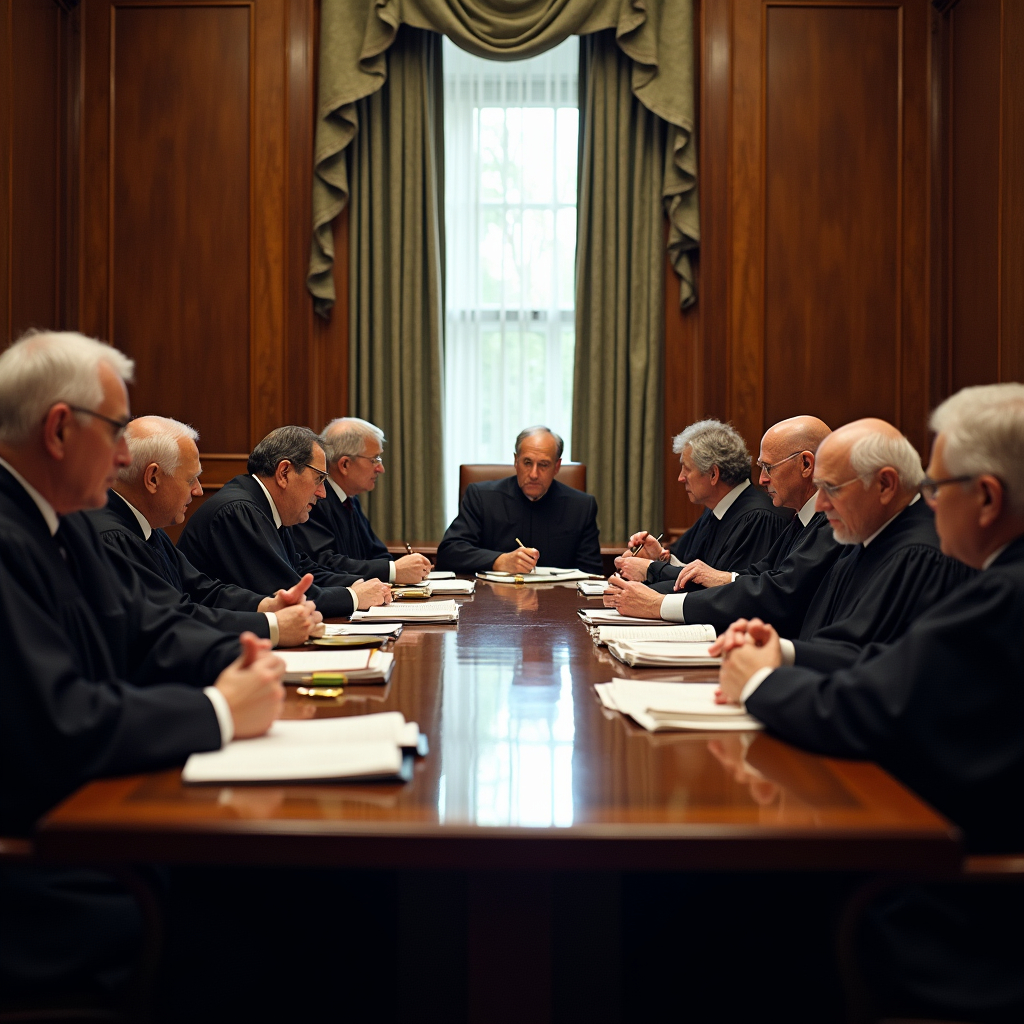
However, once a matter is assigned to a bench, the “Chief Justice” does not have the authority to control how that bench operates or make decisions on cases assigned to it. As required by law, a bench made up of puisne judges exercises its judicial role free from intervention from anybody, even the “Chief Justice.” Thus, by assigning a certain subject to a particular bench, that bench gains exclusive jurisdiction over the case. Given the foregoing, it follows that the two primary responsibilities of the “Chief Justice” are to administer the Court’s operations and to wield judicial authority as a Judge of the Court on an equal basis with other judges. In light of these tenets and the ratio of the aforementioned conclusive rulings, the petitioner’s claim that the term “Chief Justice” should really be interpreted as “collegium” which consists of the Chief Justice and the other five most senior judges, is not easily accepted.
Further, the Supreme Court mentioned that the basis of the argument by the petitioner is also the ‘Second Judges Case’. It was decided in this case that the Chief Justice, although, will have all the benefits of full interaction and efficient consultation with other senior judges, the collective wisdom of all the members of the collegium is to be considered. The court also mentioned that if the expression Chief Justice is to be considered as the collegium, then indeed, the day to day functioning of the court will be hampered. The Supreme Court pointed out that the need for consultation with all the members of the collegium is mandatory for the appointment of judges, as laid down in the Second Judges case. However, the question in the present case is with regards to the making of a roster and the allotment of cases to different benches or different judges. This provision relates to the day to day functioning of the court, whereas the appointment of judges is not a part of the regular functioning of the court. Thus, the court said that the meeting of the collegium on a day to day basis for making of rosters and the allotment of cases is impractical. It is necessary to consider the observations made in the context of the three Judges’ case. Keeping that in mind, the Supreme Court concluded that the word “Chief Justice” wherever it appears, cannot be interpreted to represent the “collegium” of the senior judges based on the ratio of those decisions.
The function of the “Chief Justice” as master of the roster also takes on great importance. Each “Chief Justice” carries out his duties by consensus and consultation after taking into account a number of pertinent variables, such as the interests and skills of each judge, their area of expertise, their ability to handle a particular kind of case, and many others. But the “Chief Justice” who has the authority of the “master of the roster” must be the one to utilise such a power wisely. At the same time, the court said that the matters are to be listed as per the Supreme Court Rules, 2013.
Analysis of Shanti Bhushan vs. Supreme Court of India through its Registrar (2018)
Justice A.K. Sikri gave a detailed explanation as to why the court came to the aforementioned decision. Justice Sikri said that the court placed its reliance on collective wisdom while making recommendations for the appointment of judges, with regard to interpreting Article 124. Justice further suggested that such an approach shall be applied in interpreting the power of the Chief Justice with regard to the making of the roster. The court admitted the fact that the day to day making of roster and allocation of matters to the different benches or different judges cannot be given to multiple judges of the collegium. It is every possible that there is a difference in opinion among the judges of the collegium, which will hamper the day to day functioning of the court. The Government of India Act, 1935 created the Federal Court in British India, which was succeeded by the Supreme Court of India. Section 200 of the Government of India Act, 1935, took into consideration the Chief Justice of India for the first time. Justice was administered by state High Courts until the Federal Court was established. An appeal against the High Court’s ruling was considered by the Privy Council’s judicial committee. It is not required to research the legal background of the courts in this nation for the purpose of this case.
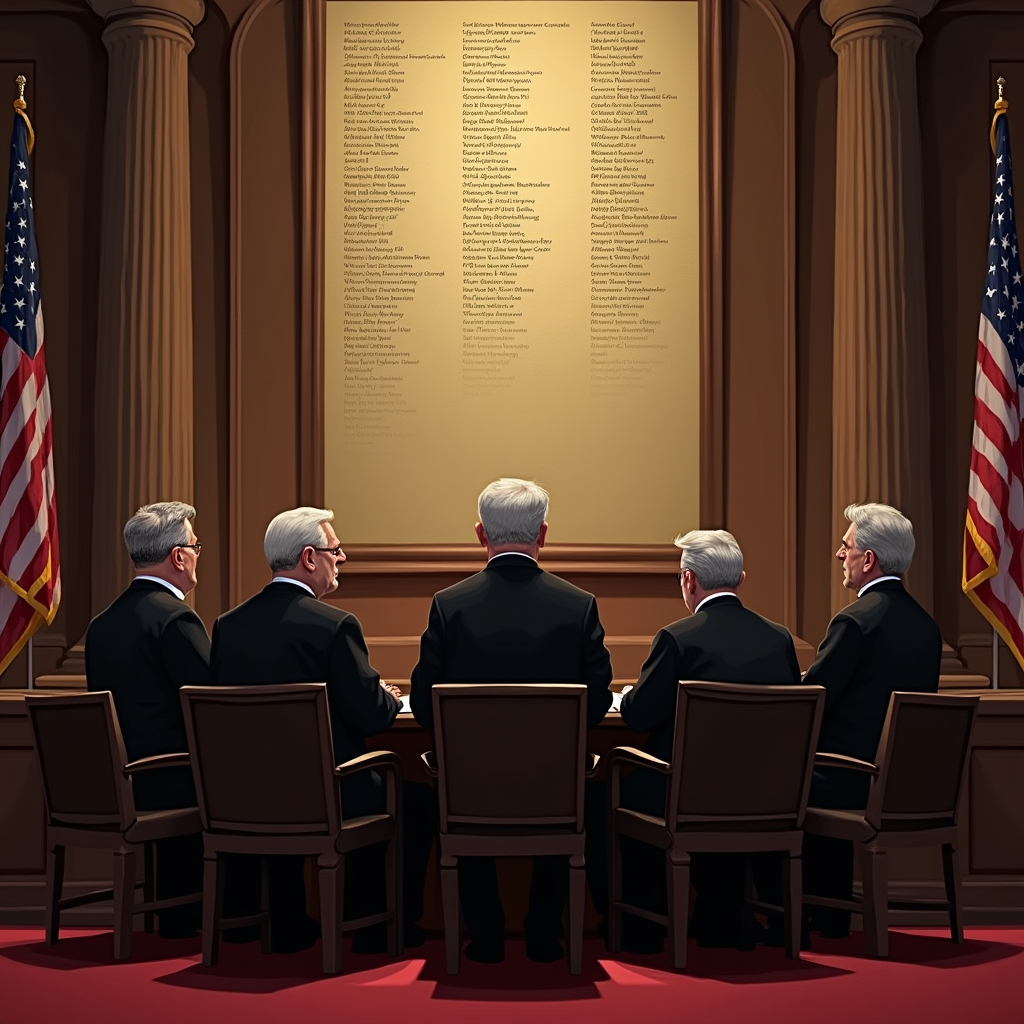
Elaborating on the interpretation of Article 214, Justice A.K. Sikhri mentioned that clause (3) of Section 214 provides that the Chief Justice of India is the one who shall determine the constitution of any division of the court and its members. Similarly, Article 145 of the Constitution of India provides for the rules of the court. This article says that the Supreme Court has the authority to frame rules for general regulation of the practice and procedure of the court. The Supreme Court Rules, 2013 are framed as per the provisions of Article 145.
The court further gave a decision on the issue of considering the term Chief Justice as the collegium of senior most five judges. In this regard, the court mentioned that this argument was put forth based on the constitutional judgements of the Supreme Court in the case of S.P. Gupta vs. Union of India (1981) which were clarified by the Second Judges case. However, the powers of the Chief Justice in this case are given with regard to the appointment of judges and not the day-to-day business of the court.
In the Third Judges case, the court held that the collegium shall consist of four senior most judges of the Supreme Court. The term “Chief Justice” was read as collegium as per Article 124, in the Second and Third Judges cases.
Thus, Justice Sikri held that the court shall function as per the Supreme Court Rules 2013. The court further held that all the matters and functioning of the court have to be done in accordance with the Handbook on “Practices and Procedures and Office Procedure” of 2017.
It is indeed correct that the authority of the Constitution of India is above the people in-charge of the posts and positions under the Constitution. Therefore, the provisions of fairness and transparency should be respected at all times by the people in-charge. The exclusive and sole power of the Chief Justice of India to allot matters to benches is a power that is to be exercised on an everyday basis, and thus, the non-interference by other judges is essential to ensuring the smooth functioning of such administrative work.
Cases referred
Further, the Supreme Court went on to refer to various judgements of different courts to clarify the ambit and scope of the power entrusted with the Chief Justice of India.
State of Rajasthan vs. Prakash Chand & Ors. (1998)
The Supreme Court mentioned the case of State of Rajasthan vs. Prakash Chand & Ors. (1998), which was referred to by the petitioner himself in his petition. In this case, it was held that the “Chief Justice of the High Court is the Master of Roster.” The decision went on to declare that only the Chief Justice of India is responsible for and has the powers to constitute different benches of the court and allocate cases to the benches or judges. Based on this judgement, the court drew certain inferences. Firstly, it mentioned that the Chief Justice is the master of the roster and he alone has the right to list cases before different benches constituted by him. Secondly, the court mentioned that any such decision related to the allotment of matters to different benches or different judges can only be done by any puisne judge when the Chief Justice of India entrusts him with such work and the puisne judge has to work in accordance with the directions of the Chief Justice. Additionally, it was also clarified that the puisne judges have no authority to “pick and choose” any case pending before the High Court. He can allot any pending case with the appropriate orders by the Chief Justice of the High Court. Moreover, it was held that the Registry cannot be given directions by the judges that run contrary to the directions given by the Chief Justice.
Campaign for Judicial Accountability and Reforms vs. Union of India & Anr. (2018)
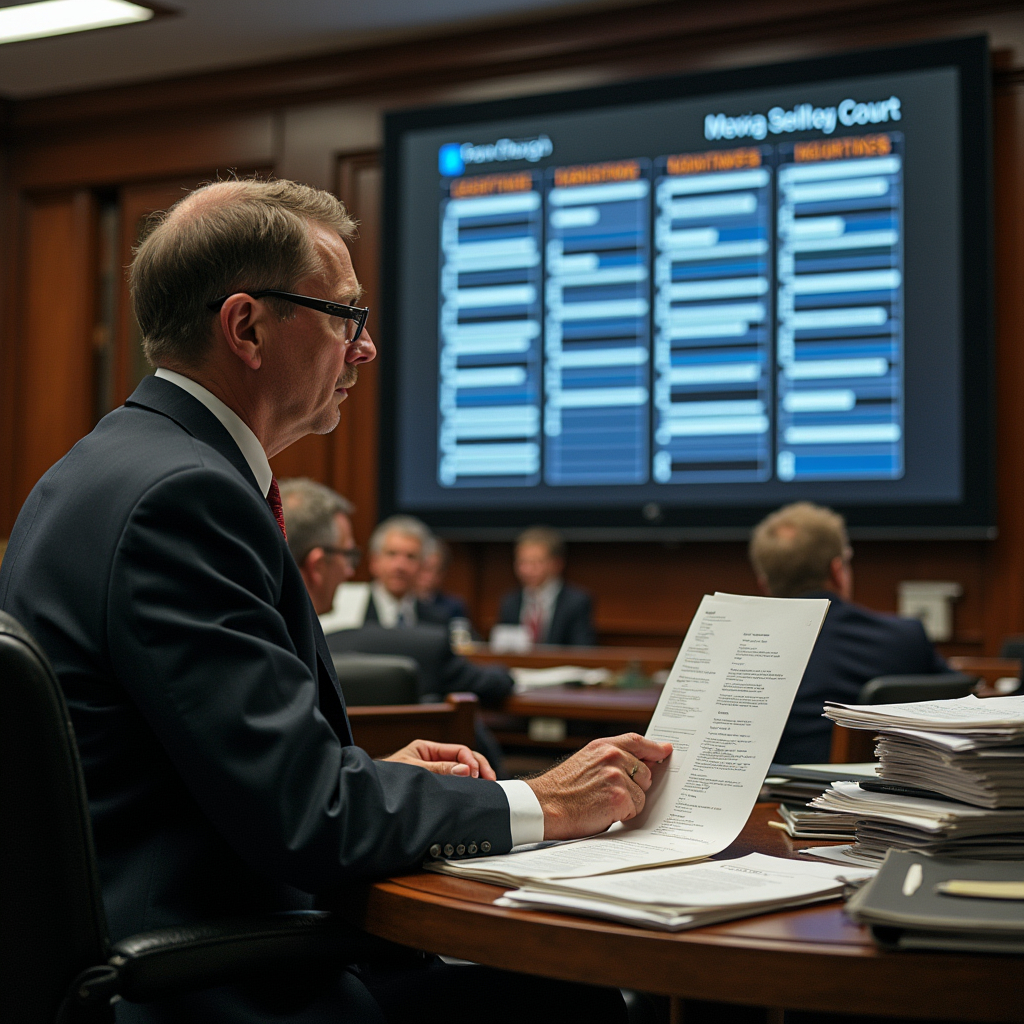
The Supreme Court of India further noted that the aforementioned principle was laid down in the cases of State of Rajasthan vs. Prakash Chand (1998) and Campaign for Judicial Accountability and Reforms vs. Union of India & Anr. (2018). In this case, the court held that the administrative control of the High Court rests with the Chief Justice of the High Court alone. The Registrar cannot be ordered to list cases to any bench or any judge contrary to the directions given by the Chief Justice. The case highlighted that the person in charge may be at a very prestigious and high position, however, he will not be above the law. The principle of ‘rule of law’ is a very essential principle that is followed at all times. The Chief Justice is equally bound by the laws of the land while performing administrative functions.
Asok Pande vs. Supreme Court of India through its Registrar and Ors. (2018)
The Supreme Court pointed out that this question can be referred to through the case of Asok Pande vs. Supreme Court of India through its Registrar and Ors. (2018). In this case, the court held that the petitioner filed a writ petition under Article 32 of the Constitution, citing several grievances, and that petition resulted in the judgement. In addition to voicing personal grievances regarding certain proceedings in the Allahabad High Court, he requested relief in the form of a writ of mandamus against the first respondent, the Supreme Court of India, directing it to develop the procedures for forming the benches of the Court and apportioning jurisdiction amongst them. In this regard, the petitioner argued that the rules shall be made in this effect. The three judges bench in the court of the Chief Justice should consist of the Chief Justice and two other senior most judges. The petitioner also argued that the Constitution bench shall consist of five senior most judges or three senior most judges and two junior judges.
Inder Mani and Others vs. Matheshwari Prasad and Others (1996)
The court referred to the judgement of Inder Mani and Others vs Matheshwari Prasad and Others (1996). In this case, the Chief Justice of the High Court of Allahabad constituted a division bench of Mr Justice V.N. Khare and Mr Justice A.P. Singh. However, on the date of the hearing, Mr Justice A.P. Singh did not sit with Mr Justice V.N. Khare. Later, questions were raised with regard to such an incident. The discipline of the judiciary requires that the puisne judges of the High Court abide by the directions given by their Chief Justice. The judges are not allowed to go against the directions given by the Chief Justice and cannot pick and choose cases as per their wishes and will. It was improper that Justice A.P. Singh, even after the directions by the Chief Justice, did not sit on the division bench, and sat singly to take up matters as per his own discretion. In the case where Justice A.P. Singh faced certain difficulties in sitting on the division bench, the right action would have been to first, discuss the issue with the Chief Justice and then act accordingly. In this case, it was held that judges cannot choose and pick the cases for themselves or for any other judge. Choosing and picking hampers the credibility of the judgement and is strictly prohibited.
State of U.P vs. Neeraj Chaubey and Others (2010),
In the case of State of U.P vs. Neeraj Chaubey and Others (2010), it was held that the power of Chief Justice to allot cases does not only come from the statutory provision under Section 51 of the States Reorganisation Act, 1956 but also from the very nature of his work. In this regard, the court made an essential statement, which is given below:
“If the judges were free to choose their jurisdiction or any choice was given to them to do whatever case they may like to hear and decide, the machinery of the court would collapse and the judicial work of the court would cease by generation of internal strife on account of hankering for a particular jurisdiction or a particular case.”
Conclusion
Courts are not unaware of the fact that the smooth functioning of any system or organisation takes a long period of time to materialise. It is a constant process. Working for the improvement of such a system is essential and is a welcoming step. The Supreme Court is no exception to the aforementioned goals. However, it is important to remember the following statement, as given by Justice Venkataramiah in the first judges’ case:
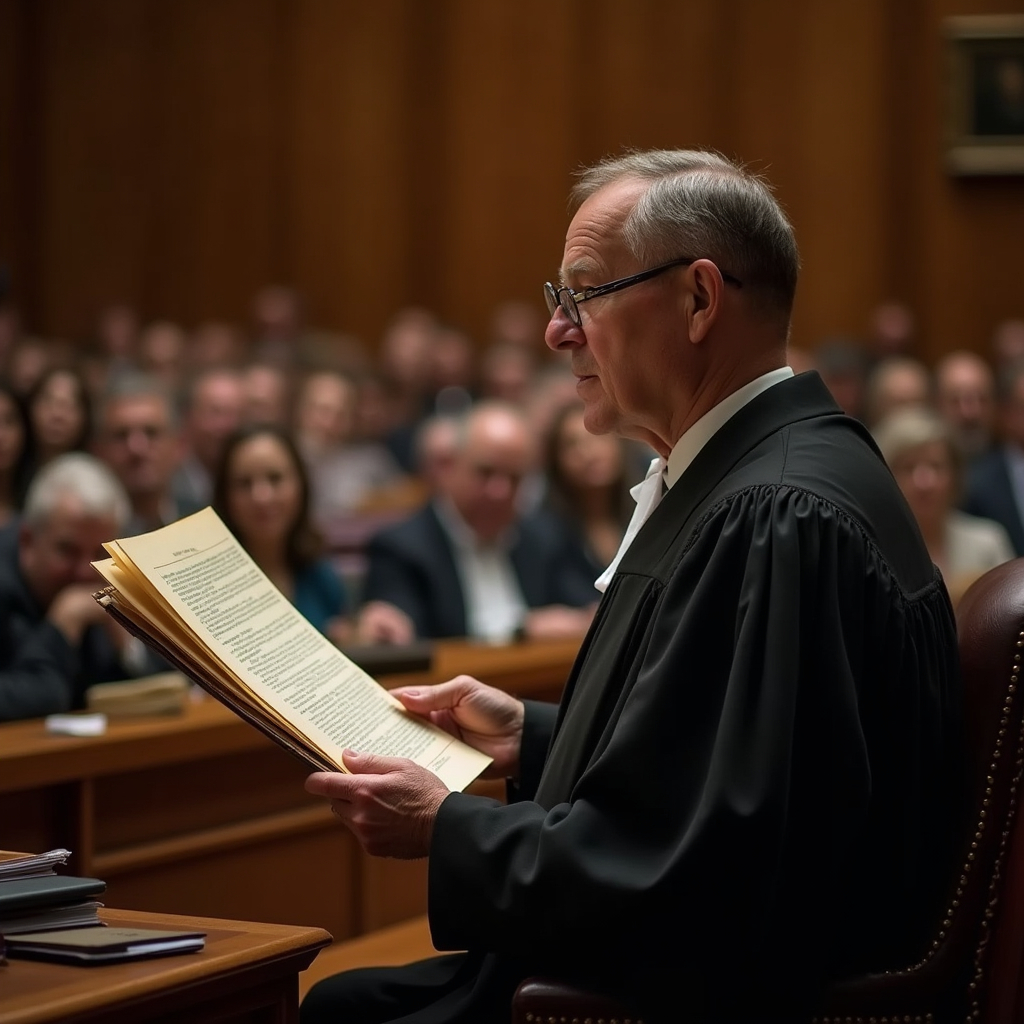
“A judge should be independent of himself. A judge is a human being who is a bundle of passions and prejudices, likes and dislikes, affection and ill will, hatred and contempt and fear and recklessness. In order to be a successful judge, these elements should be curbed and kept under restraint and that is possible only by education, training, continued practice and cultivation of a sense of humility and dedication to duty.”
Thus, in the present case, the Supreme Court of India, acting via its Registrar, rendered a major ruling in this case that continues to influence the conversation in India about judicial reform and administration. It has prompted a continuing discussion on the need for reforms to improve the judiciary’s openness, strengthen the accountability culture, and guarantee that justice is administered in a way that is both clear and impartial. This case, which embodies the ongoing pursuit of a judicial system that maintains the greatest standards of probity and justice, continues to be a landmark for legal academics, practitioners, and policymakers.
Frequently Asked Questions (FAQs)
What role do the single judge and the Registrar play in the Supreme Court of India?
Any single judge of the Supreme Court is responsible for dealing with the civil and criminal matters of the court, while the Registrar looks after the administration of the Supreme Court of India.
How is a judge of the Supreme Court appointed?
The judges of the Supreme Court are appointed by the President of India, after consultation with the Chief Justice of the Supreme Court, as per Article 124 of the Constitution of India.
Why is there a minimum number of Judges mentioned under Article 145 of the Constitution of India?
With regards to hearing any substantial question of law concerning constitutional provisions, there needs to be a minimum of five judges on the bench. This is done in order to incorporate a broader perspective on significant matters such as the Constitution of the country.
Has there been any amendment to Article 124 of the Constitution of India?
Yes, there have been significant amendments to Article 124 of the Constitution of India. The amendments are related to the strength and composition of the Supreme Court. There have also been amendments with regard to the appointment and removal of judges.
What are the provisions with regard to the publication of the rules of the Supreme Court?
Clause (5) of Article 145 provides for the publication of the rules of the Supreme Court. It provides that all the rules made under Article 145(5) shall be published in the Official Gazette. This provision keeps a check on the public accessibility and transparency of the rules governing the procedures followed by the Supreme Court of India.
References
- https://main.sci.gov.in/supremecourt/2018/12405/12405_2018_Judgement_06-Jul-2018.pdf
- https://www.scobserver.in/journal/j-bhushans-11-key-judgments-on-reservation-privacy-religious-rights/
- https://www.ndtvprofit.com/opinion/2018/01/12/chief-justice-of-india-above-or-under-the-law
 Serato DJ Crack 2025Serato DJ PRO Crack
Serato DJ Crack 2025Serato DJ PRO Crack


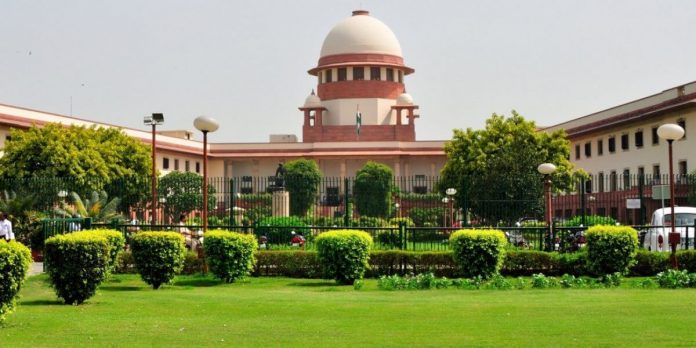







 Allow notifications
Allow notifications


